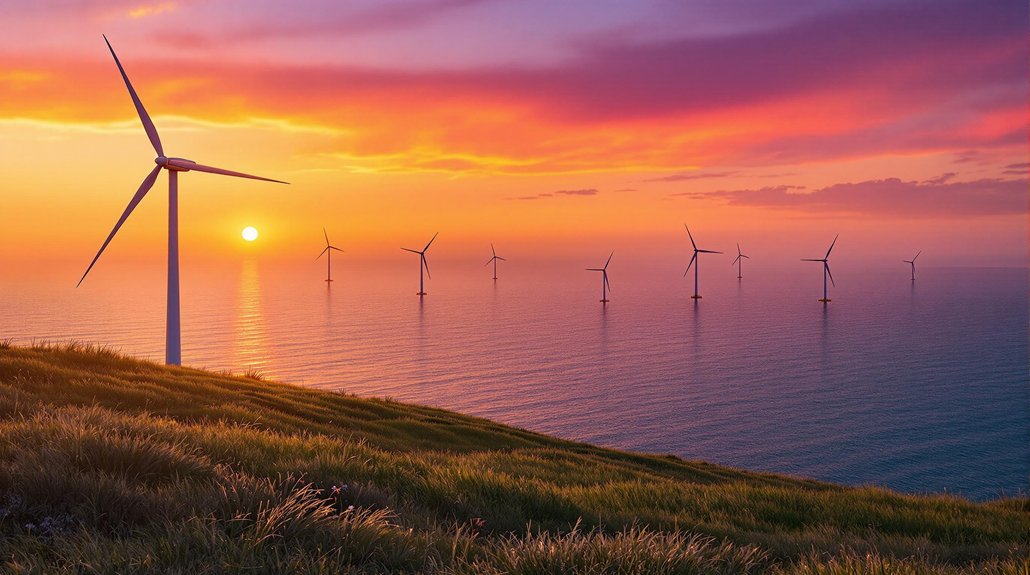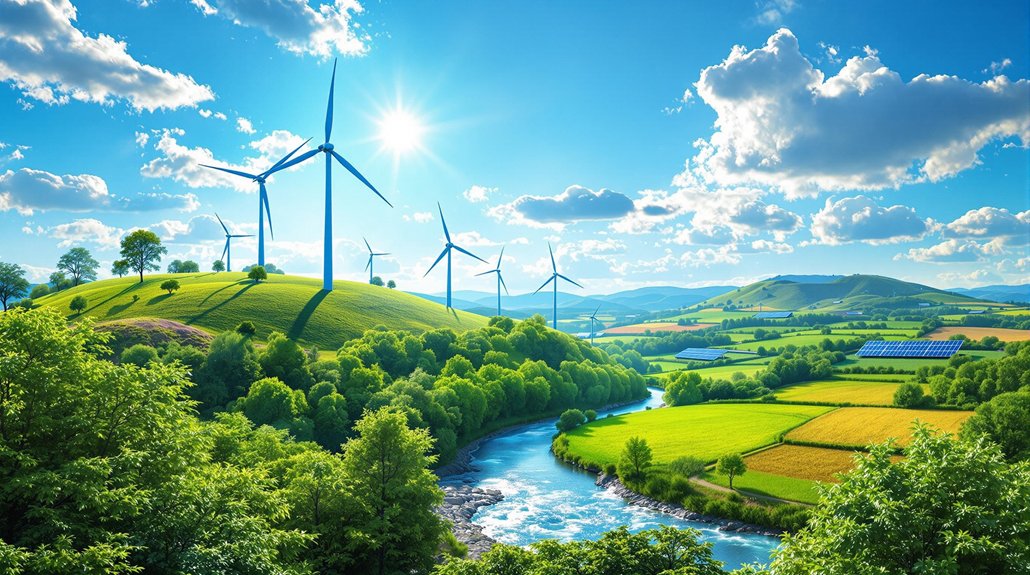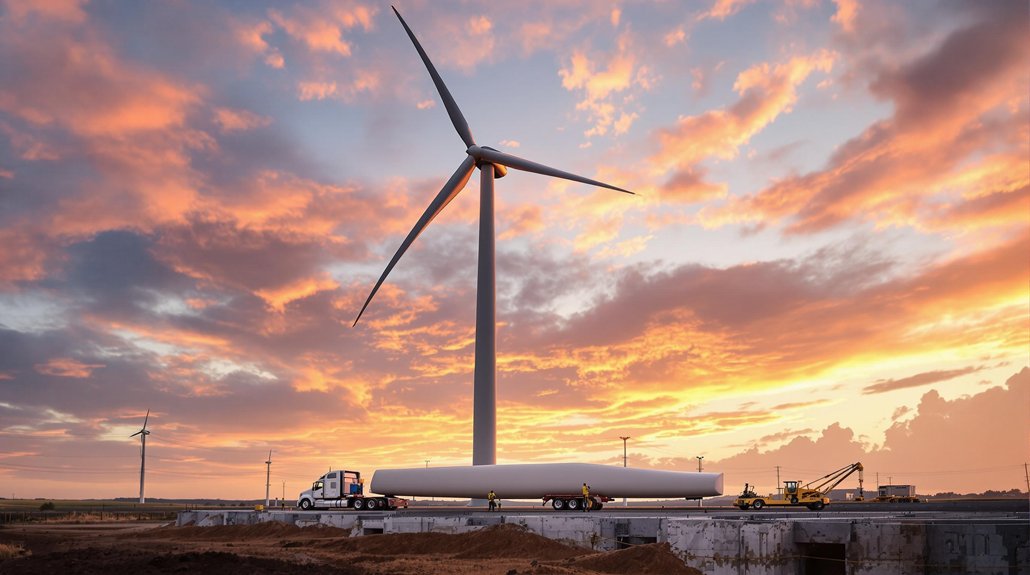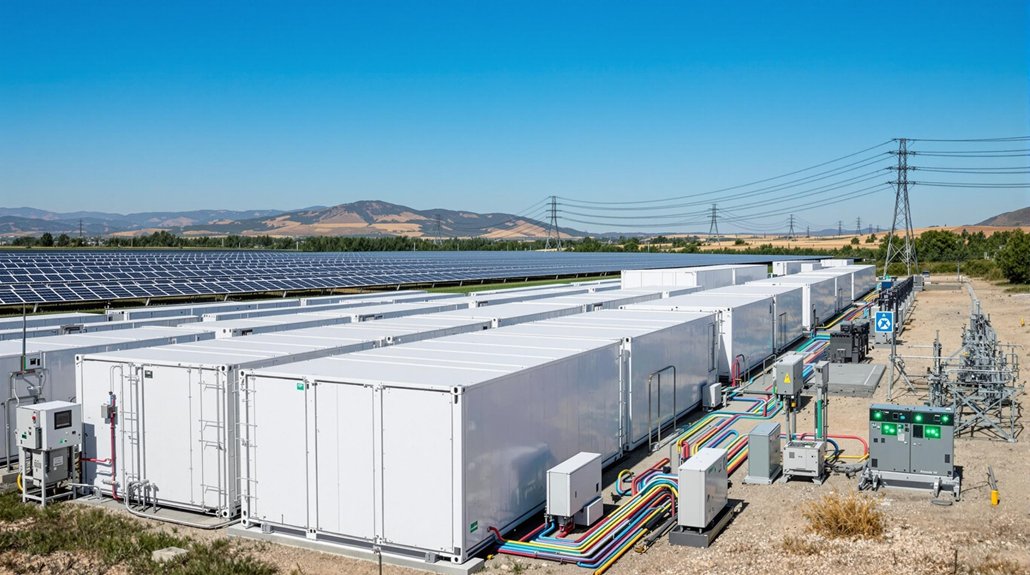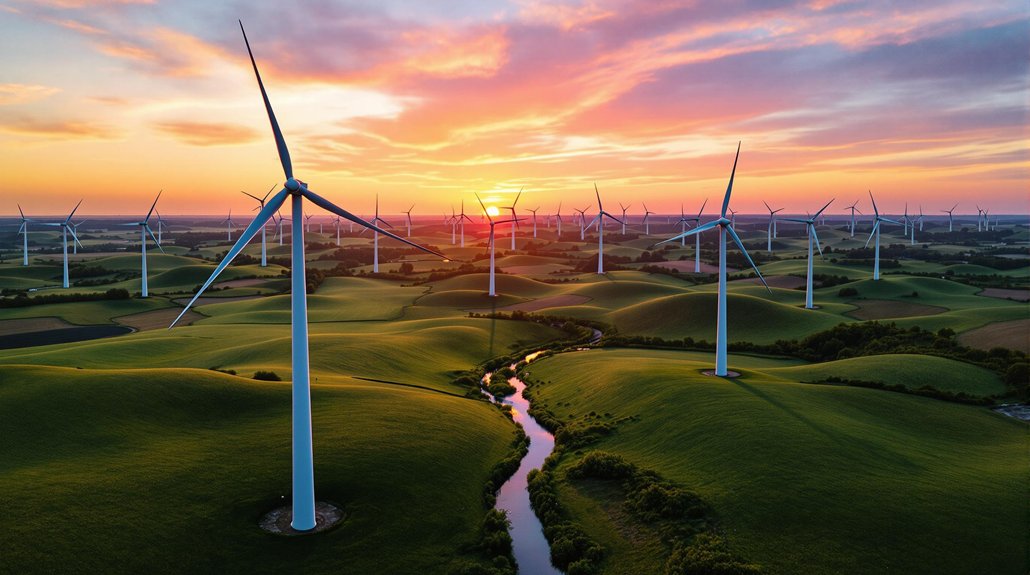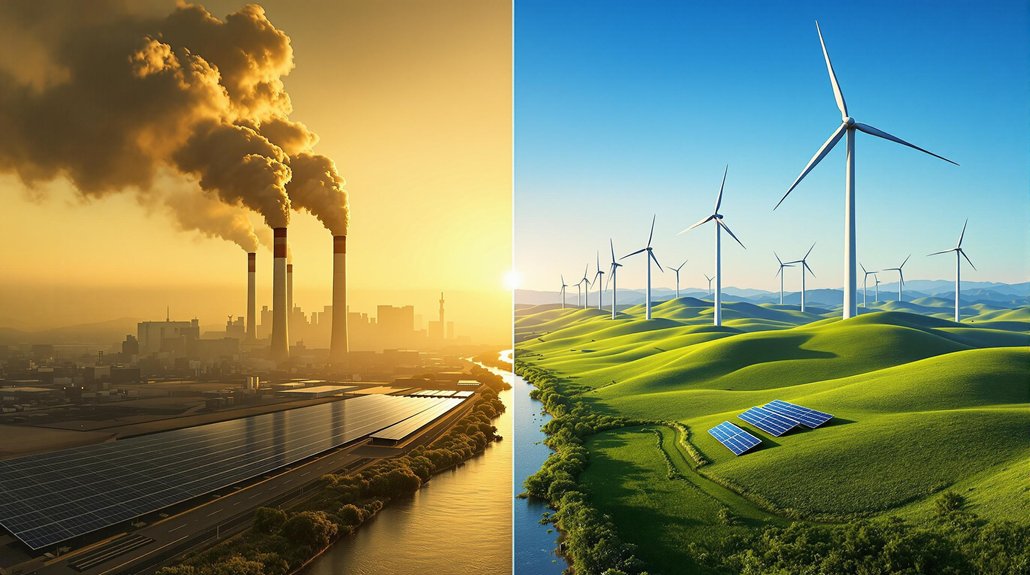Wind turbines come in several types that capture clean energy from moving air. Horizontal axis turbines, the most common, have blades parallel to the ground and convert up to 50% of wind energy into electricity. Vertical axis designs work well in changing wind directions. Offshore turbines in oceans generate more power, while onshore models cost less to install. Specialized options include small systems for homes and experimental airborne designs. Each type plays a unique role in renewable energy.
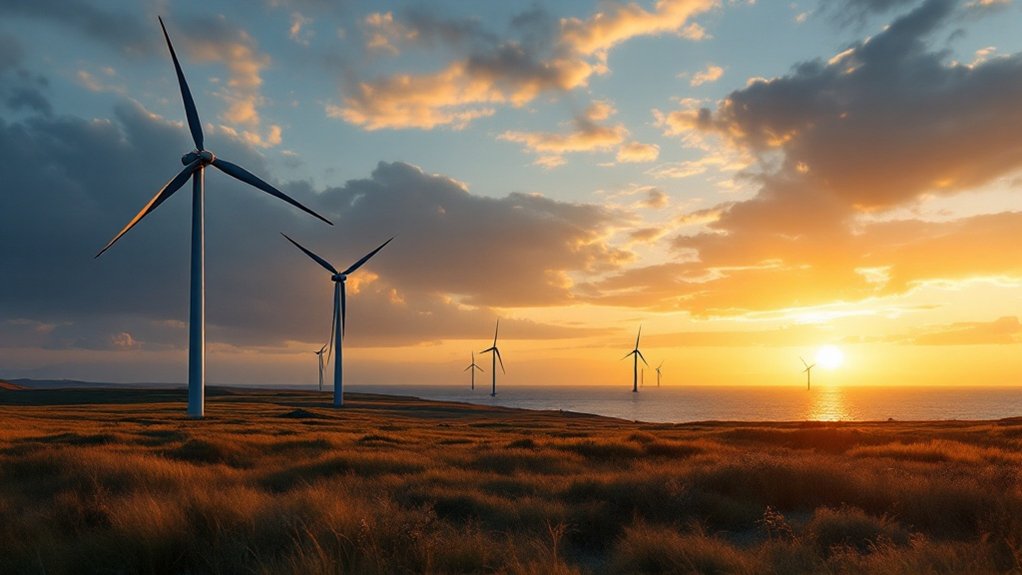
Seven main types of wind turbines help convert wind energy into electricity around the world. The most common type is the Horizontal Axis Wind Turbine (HAWT), which looks like a traditional windmill. These turbines have blades that spin on an axis parallel to the ground. They typically have three blades that can be up to 80 meters long. HAWTs are quite efficient, converting 40-50% of wind energy into electricity and generating between 2-8 megawatts of power per turbine. HAWTs typically operate upwind of the tower. These turbines require extremely strong foundations to support the considerable weight of their components and withstand operating forces.
Wind turbines transform breezy air into electrical power, with HAWTs leading the charge through their efficient three-bladed design.
Vertical Axis Wind Turbines (VAWTs) have blades that rotate around a vertical axis perpendicular to the ground. There are two main designs: the Darrieus, which looks like an eggbeater, and the Savonius, which has an S-shape. VAWTs work well in areas with changing wind directions since they don’t need to turn to face the wind. Though less efficient than HAWTs, they’re good for urban areas and smaller applications.
Offshore wind turbines are installed in water, usually oceans. They can be fixed to the seabed or float on the water’s surface. These turbines are larger than land-based ones and can produce up to 15 megawatts of power. They benefit from stronger, steadier winds and don’t cause visual or noise issues for nearby communities.
Onshore wind turbines are built on land, often grouped in wind farms. They typically generate 2-3 megawatts and cost less to install and maintain than offshore turbines. However, some people don’t like how they look or sound. These turbines contribute significantly to reduced carbon emissions while providing economic benefits to local communities.
Small wind turbines produce less than 100 kilowatts and serve homes, farms, and small businesses. They come in both horizontal and vertical designs and often work alongside solar panels or batteries, especially in remote locations.
Direct drive wind turbines connect the rotor directly to the generator without a gearbox. This makes them simpler and easier to maintain, though they have heavier nacelles due to larger generators.
Airborne wind turbines, still being developed, use kites or balloons to capture wind energy at heights above 500 meters, where winds are stronger and more consistent.
Frequently Asked Questions
How Noisy Are Wind Turbines?
Wind turbines produce varying noise levels depending on distance and conditions. At 300 meters, they generate 35-45 decibels, similar to rural background noise.
Standing directly in front of a turbine can reach 60-80 decibels. Modern designs are quieter than older models.
Most countries regulate turbine noise, with limits between 38-45 decibels near homes. Noise decreases by 6 decibels each time the distance doubles from the source.
What Happens to Wind Turbines During Extreme Weather?
During extreme weather, wind turbines have built-in safety systems. They automatically shut down when winds exceed 55 mph.
Their blades can “feather” (turn sideways) to reduce damage from strong gusts. Modern turbines withstand winds up to 156 mph, with lightning protection systems and special coatings to prevent ice buildup.
Monitoring technology detects wind changes within 1 degree, allowing operators to secure turbines before storms hit.
How Long Does a Wind Turbine Last?
Wind turbines typically last 20-30 years. Their towers and foundations usually survive the entire lifespan, while blades, gearboxes, and generators might need earlier replacement.
Longevity depends on environmental conditions, maintenance quality, and materials used. When turbines reach the end of their life, they can be refurbished, repowered with new components, or decommissioned.
Today’s turbines are designed with recycling in mind, though blade disposal remains challenging.
Do Wind Turbines Kill Many Birds?
Wind turbines do kill birds, with U.S. estimates ranging from 140,000 to 1.17 million deaths annually.
However, this represents about 1 in 14,000 human-caused bird deaths. Cats, buildings, vehicles, and pesticides kill far more birds each year.
Mitigation strategies like painting one blade black, using radar detection systems, and careful placement of turbines can reduce bird fatalities considerably.
Can Wind Turbines Be Recycled at End-Of-Life?
Most wind turbine components are 85-95% recyclable, including steel and copper parts.
However, turbine blades present a significant recycling challenge due to their composite materials.
Several methods exist to handle old blades, including grinding them for filler material, processing them in cement kilns, or repurposing them for bridges and playgrounds.
New technologies are emerging, with industry initiatives targeting zero-waste blades by 2030.
